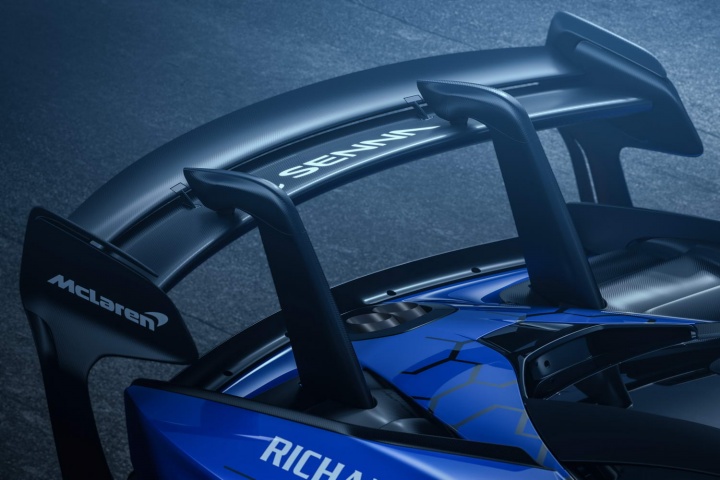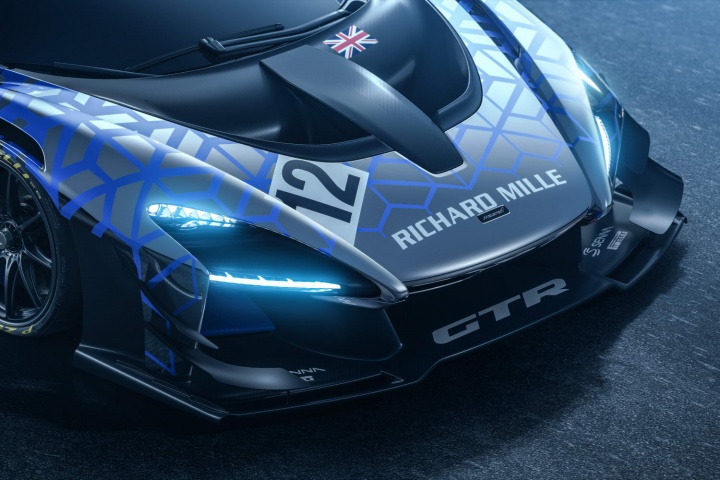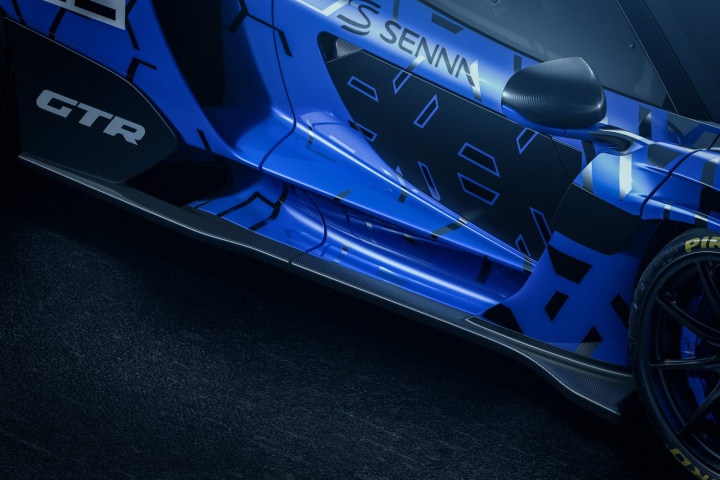What's the news?
McLaren says that it has created its ultimate track day car in the dramatic shape of the Senna GTR.
12 months on from the reveal of the original concept version of the Senna GTR, McLaren says that this is a "fully-fledged track machine - uncompromised, unconstrained and unshackled by road or racing regulations." Better than that, the sports car maker claims that the Senna will be faster around a race track than any of its other products, short of an actual F1 car.
"The McLaren Senna GTR is a perfect example of our determination to bring our customers the Ultimate expression of track driving performance and excitement. The McLaren Senna was designed from the outset to be an extreme track car, but the 2018 McLaren Senna GTR Concept suggested how much more further we could go and now, free from the constraints of road car legislation and motorsport competition rules, we have pushed the limits of what is technically possible to advance circuit driving capability to another level entirely" said Mike Flewitt, Chief Executive Officer, McLaren Automotive.
Just 75 will be built and you're going to have to find a minimum of STG£1.1 million if you want to buy one.
How has McLaren made the Senna GTR so fast? First of all by squeezing more power out of its 4.0-litre twin-turbo V8 engine. There's an extra 25hp compared to the road legal Senna, bringing the total to 825hp, with an equally impressive 800Nm of torque.
Part of that power increase is down to recalibrated engine management software, while McLaren has also removed the catalyst from the exhaust, reducing back pressure and also making the engine more louder. Many, many, more louder.
The exhaust also now exits under the back of the car, rather than at the sides as on the road car - the reason simply being that a rear-exit exhaust was lighter.
A dry weight of 1,188kg means that this 825hp missile weighs about as much as a basic Fiesta, so it has a power-to-weight ratio of 654hp per tonne - admittedly before you add a driver and a tank of fuel.
There are three driving modes - Wet, Track and Race - while the Senna GTR also gets launch control and seven-speed 'seamless shift' dual-clutch transmission.
McLaren says that it has taken 'a holistic' approach to the Senna GTR's aerodynamics, and the result is an extra 200kg of downforce at 250km/h, making a total of 1,000kg of downforce in total - almost as much as the weight of the car itself. It also means that the GTR can match the road-going Senna's downforce figure at a speed that's 15 per cent lower. It's also been designed to be less sensitive to the car's body movements in corners.
To get that downforce, there's a new front splitter, a bigger rear diffuser, new dive planes at the front, and vortex generators down the side. There's also, as you might have noticed, a honking great rear wing, which sits further back than the one on the road car and features design details lifted from LMP1 Le Mans racers. That rear wing is, as on the one on the road car, fully active, able to tilt back to 'stall' itself for maximum speed on the straights, before pivoting up again to provide massive downforce and stability for braking.
At the core of the Senna GTR is the same Monocage III-R central structure as you'll find in the road car, but the car has been lowered by 34mm for better aero performance, and the front and rear tracks are wider.
It's also a tiny bit lighter, by 10kg, compared to the road car and it gets 19-inch centre-lock racing style wheels.
There's also a full suite of racing equipment, including pneumatic air jacks, pit radio, fire extinguishing system and data logger. The cabin loses its touchscreen infotainment and stereo, but keeps the air conditioning so as to stay cool when the racing gets hot. Ahem. There are polycarbonate side windows with sliding panels, and a racing-style fuel filler. If you like, you can even have those alloy wheels painted in a special finish - Gloss Black, Race Silver or Matt Dark Graphite are all on offer.
Somewhat surprisingly, given all the high-performance mods, McLaren hasn't gone nuts on the suspension settings, saying that the Senna GTR is designed "to ensure that 95 per cent of the performance of the car could be accessed by 95 per cent of drivers."
The McLaren Senna's variable ride control suspension, which enables different ride heights for road and track, is superfluous in the track-only car and to save weight and reduce complexity has been replaced with aluminium double wishbones, springs, uprights and anti-roll bars developed from the suspension of the GT3 cars used for McLaren's customer racing programme. Four-way adjustable dampers are fitted, as are solid bushes and adjustable camber. Meanwhile, those 19-inch wheels (which would be illegal on a GT3 car) get Pirelli slicks, sized 285/650 front and 325/705 rear.
Braking is by six-piston calipers at the front, and four-piston calipers at the rear, and they're working on 390mm layered carbon-ceramic discs that feature machined cooling vanes. The rear wing, as on the road car, also acts as an airbrake, tilting forward to help slow the car, and its 20 per cent more efficient at doing so here than the road-going Senna's wing.
The Senna GTR is also equipped with many of the electronic driver aids that provide safety on the road, including anti-lock braking, traction control and dynamic electronic stability control. Additionally, it features pit lane speed control; systems that monitor both tyre pressure and tyre temperature; brake pad wear sensors; brake disc-wipe technology and anti-collision radar.
It'll be available in left hand drive only, gets an FIA-approved carbon bucket seat with six-point FIA harness, and a passenger seat is a 'no cost option.' There are no airbags, but then you'd probably already guessed that. There's lustrous Alcantara headlining, but no carpets (except for a patch on each door sill).
The folding instrument panel, shared with the 720S, is gone, replaced by a simple digital display with gearchange lights mounted on top. There are also LEDs on the side of the instruments that tell you how close a car behind is getting, presumably to tell you if you're about to be lapped by a Toyota LMP1 car on a test day... Because of the rear airscoop, there's no rear-view mirror, but there is a rear-view camera which projects onto a display in the centre of the dash.
The two coolest items, though? A standard-fit pit-to-car radio, and a big red starter button mounted on the roof panel.








